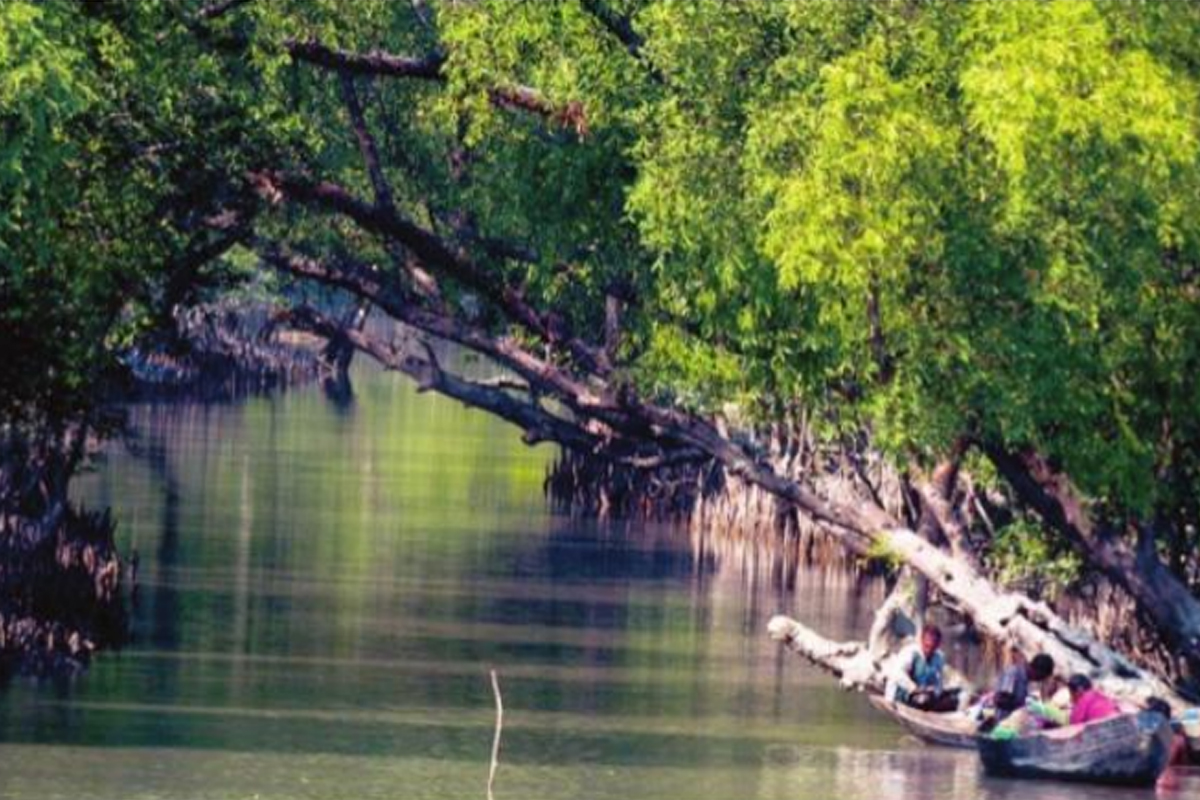Forgotten heroes
Ullaskar suffered immensely after being caught by the British and was sent to the Cellular jail in the intractable Andamans.
According to the State Forest Department estimates, around 40 per cent of the mangroves were ravaged.

Sundarbans, part of north-eastern India and southern Bangladesh, is a Unesco-designated world heritage site.
In May 2020, this ecologically sensitive region became one of the areas worst affected by Amphan as the landfall happened in this expanse.
Cyclone Amphan was much more destructive than its predecessors such as Aila and Bulbul, which occurred in 2009 and 2019. The wind speed was 240 km/hour compared to Aila and Bulbul at 120 km/hour and 155 km/hour respectively.
Advertisement
Due to Amphan, the biodiversity of this region has been affected by the loss of trees and mangroves.
West Bengal Chief Minister Ms. Mamata Banerjee stated that 1,200 km2 of a total of 4,263 km2 forest areas of Sundarbans were damaged.
According to the State Forest Department estimates, around 40 per cent of the mangroves were ravaged.
The cyclone has also affected turtles as this region is a breeding zone of a rare species (Batagur Baska), which is on the verge of extinction in some South Asian countries.
The local economy is disrupted, and there is a loss of indigenous livelihoods. After 32 embankments were breached, the paddy fields, the rivers, and the ponds are flooded with saline water, leaving the farmers in utter despair, and the plight of fisherfolks is unbearable.
Amphan impacted on indigenous people, the honey collectors who collect honey from beehives. But the farmers’ loss is enormous as the paddy fields become non-fertile for paddy cultivation for the next few years.
According to estimates by the Sundarbans Affairs Minister Mr. Manturam Pakhira, nearly 17,800 hectares of agricultural lands may have been damaged due to saline water entering the farms, and 1,08,000 farmers have been affected.
The threat to food security looms large when the dried crops, vegetables, trees, and freshwater fish are destroyed.
According to a study by Reddy et al. (2017), in the coastal areas, soil salinity is one of the significant constraints which affect paddy production, and they proposed that new varieties of paddy should be developed so that these will be more suitable to this kind of geographic location.
Padmanabhan (2019) mentioned that Indian scientists developed a new variety of paddy plant “Porteresia Coarctata” which is salt tolerant and can resist the salt concentration of up to 200 micromoles per litre.
As the local economy stands still at present and in under shock wondering how to bounce back, the local people do not have any purchasing power to procure essential food items.
We may not be able to avoid a famine soon if immediate action is not taken efficiently. The issues of loss of livelihood and threat to food security are intertwined, and the situation became miserable with the presence of Covid 19, which compelled many local people to return to this region with the hope of re-starting their livelihood.
However, with the blow of Amphan, their dreams are shattered, and they have lost whatever they had saved earlier with a lot of effort and self-sacrifice. On top of everything, they need to re-build their kutcha (mud brick) houses as the storm has already turned their homes into debris.
With no monetary support and no hope in farming, they are now in real distress. As the vast farmlands and rivers are flooded with seawater pushing the farmers and fisherfolks into utter despair, there is an urgent requirement of providing immediate relief to these people to save their livelihood.
The distress of people of Sundarbans cannot be neglected, as this is a hub of eco-tourism. We believe that they require support for short-run as well as long-run. In the short-run, they need instant cash transfer and supply of essential commodities for at least six months for their survival.
The long-run support can be in applying new technology to use the saline lands for paddy cultivation or the introduction of new salt resistant paddy crops. Besides funding from the State and the Central Government, the global networks for the conservation of biodiversity can be approached for financing.
Another way of generating funds can be by introducing a willingness to pay model for the preservation of the worlds’ largest mangrove forest of Sundarbans. As Sundarbans is a hub of ecology and biodiversity, the conservation of the archipelagos is the need of the hour.
Sundarbans being a cyclone prone area, strategies need to be built to combat cyclones’ after-effects. The embankments need to be maintained before an upcoming storm to reduce distress.
The first step to restore the local economy is to generate demand by transferring cash and investing money. The assistance of Rs 1,000 crore is already released from National Disaster Response Fund (NDRF) to West Bengal to restore the destruction created by cyclone Amphan.
Although the storm brought loss of livelihood and threat to food security, the problem can be solved with financial and technological support from the government.
To conclude, the most feasible way to bring back the local economy’s resilience is by instant cash transfer, the introduction of salt-resistant rice crop, and specific investment in land and fishing ponds.
The writers are, respectively, Assistant Professor at the Indian Institute of Management, Bodh Gaya and Assistant Professor at FLAME University Pune. The views expressed are personal.
Advertisement